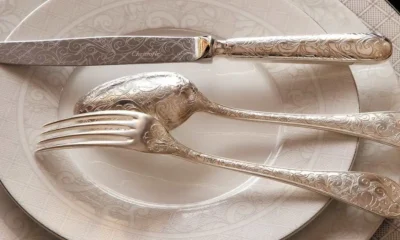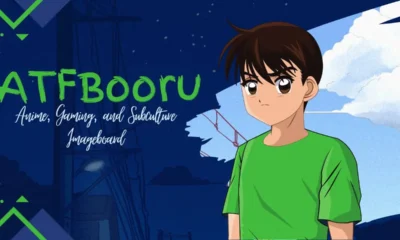GENERAL
Simbramento: Traditional Livestock Migration in Europe
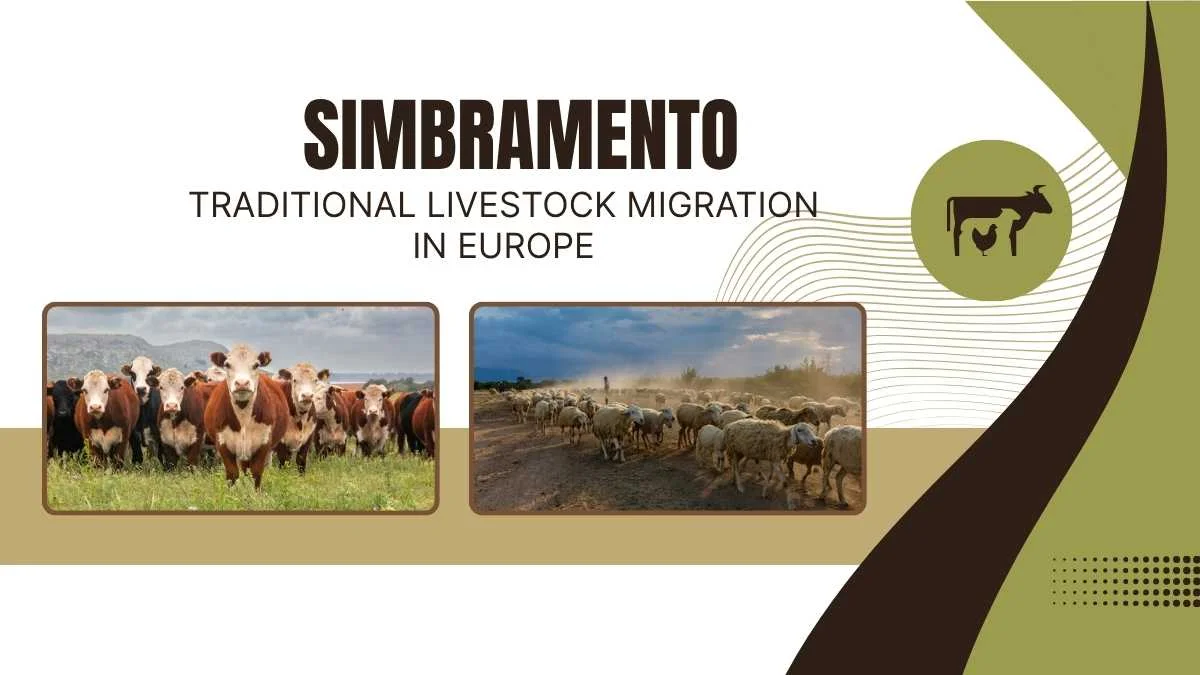
Simbramento is a historical agrarian practice embedded in the ecological and cultural heritage of southern Europe, especially in Italy and Spain. It refers to the seasonal movement of livestock from lowland plains to elevated summer pastures, usually in the spring or early summer. This method, part of a larger transhumant system, is both ecologically sustainable and culturally rich, reflecting a profound relationship between humans, animals, and nature.
Table of Contents
Historical Roots in Rural Europe
The origins of seasonal herding routes date back to ancient times, long before the Roman Empire. Early communities developed reliable patterns of movement in response to shifting weather and grazing availability.
In regions such as Abruzzo, Molise, and the Apennines in Italy—and Asturias, Castilla y León, and Aragón in Spain—these pastoral migrations became institutionalized. Specialized trails, like Italy’s tratturi and Spain’s cañadas reales, connected valleys to alpine meadows and allowed for legal and logistical movement of animals across great distances.
Part of the Transhumant Heritage
Simbramento is one expression of transhumance, a broader system practiced across continents. It aims to sustain grazing lands by alternating use and avoiding overexploitation. UNESCO recognized this model as an Intangible Cultural Heritage of Humanity in 2019 due to its ecological and cultural value.
Examples include herders guiding animals from Molise to the Abruzzo highlands or from Extremadura to the Cantabrian Mountains, following ancient droving trails that often span hundreds of kilometers.
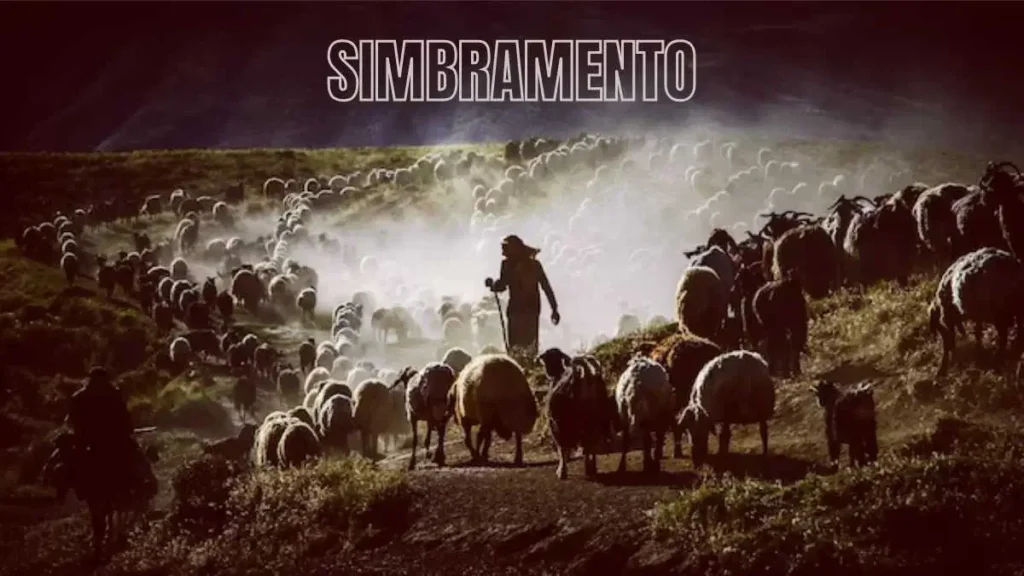
Environmental Contributions
This agro-pastoral system contributes significantly to maintaining healthy ecosystems:
- Soil and Pasture Regeneration: Rotational use of grazing areas helps reduce erosion and promotes the recovery of grasslands.
- Floral and Faunal Biodiversity: Grazing maintains open landscapes, preventing scrub encroachment and preserving habitats for rare plant and insect species.
- Natural Firebreaks: Animals feed on dry biomass, reducing the risk of wildfires during dry periods.
- Sustainable Agriculture: Using natural grazing cycles minimizes external feed input and supports low-carbon food production.
Animal Health and Well-being
The traditional movement of livestock benefits animals in multiple ways:
- Better Forage Quality: Mountain meadows provide diverse and nutrient-rich plant species, enhancing growth and milk production.
- Disease Disruption: Changing environments help break parasite cycles and reduce infection rates.
- Encouragement of Natural Behavior: Animals walk long distances and graze freely, improving overall fitness and welfare.
Cultural and Social Traditions
Communities celebrate seasonal relocation practices through festivals and rituals that keep ancestral customs alive:
- In Molise, Italy, the Festa della Transumanza marks the departure of herds with music, food, and ceremonial processions.
- In Spain, livestock crossings through Madrid’s historic avenues highlight the significance of rural traditions even in urban settings.
These events promote community cohesion and foster respect for agricultural heritage.
Legal Framework and Conservation Efforts
Given its environmental and cultural importance, Simbramento is protected under multiple policies:
- The European Union’s Common Agricultural Policy (CAP) offers financial support for practitioners of seasonal livestock relocation.
- UNESCO’s 2019 designation raised global awareness of its role in biodiversity protection, food security, and cultural sustainability.
Modern-Day Challenges
Despite its benefits, this ancestral practice faces various threats:
- Population Decline in Rural Areas: Young people are moving to cities, leaving behind an aging population with fewer skilled herders.
- Obstructed Migration Paths: Infrastructure development, land privatization, and fencing have made traditional routes difficult to access.
- Impact of Climate Variability: Unpredictable seasons affect pasture availability and disrupt long-established grazing schedules.
- Economic Disparity: Industrial animal farming, which prioritizes efficiency and high yields, competes with low-input pastoralism for viability.
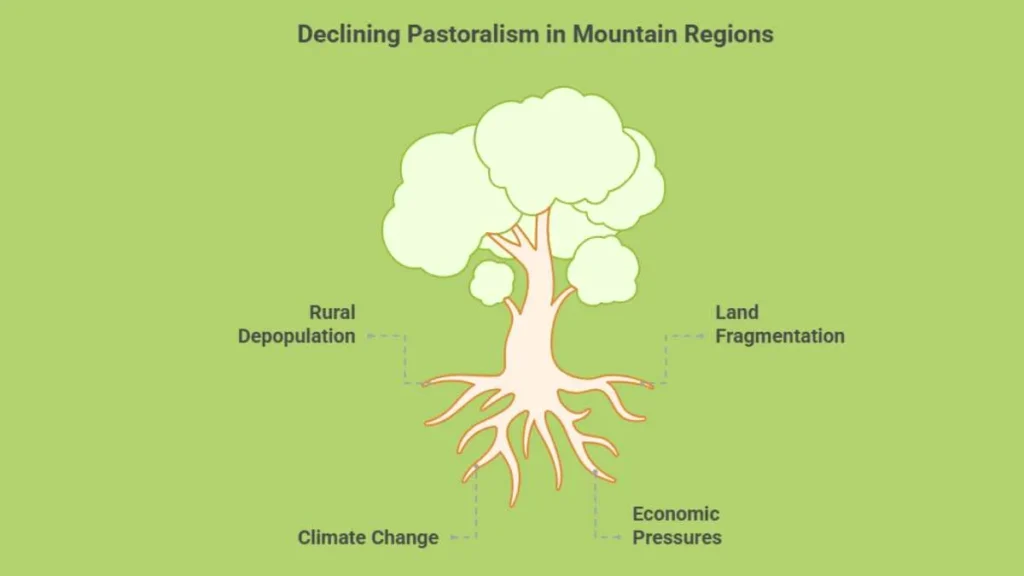
Revitalization and Future Potential
Innovative strategies are being deployed across Europe to ensure Simbramento remains relevant:
- Digital Tools: GPS and remote sensing help monitor weather and pasture health, improving route planning.
- Rural Tourism: Visitors now participate in eco-agriculture trails, experiencing traditional herding lifestyles firsthand.
- Youth Training: Government-backed initiatives offer education and financial aid to encourage new generations to take up sustainable herding.
How Does Simbramento Compare to Stationary Farming Systems?
| Aspect | Simbramento (Seasonal Livestock Migration) | Stationary Farming (Fixed Livestock Systems) |
| Mobility | Involves seasonal movement to mountain pastures | Livestock remains in the same location year-round |
| Environmental Impact | Eco-friendly, promotes pasture regeneration, and reduces overgrazing | Often contributes to soil degradation and overuse of limited pasture land |
| Biodiversity Support | Supports diverse ecosystems and prevents forest encroachment | Limited contribution to ecosystem diversity |
| Animal Welfare | Encourages natural behaviors and improved physical fitness | Constrained movement can affect animal well-being |
FAQ
Q1: What is simbramento?
A1: Simbramento is the seasonal migration of livestock from lowland regions to mountain pastures, mainly practiced in Italy and Spain.
Q2: How does it differ from transhumance?
A2: Simbramento is a specific regional form of transhumance practiced in certain parts of Europe, especially the Mediterranean.
Q3: Why is this practice important today?
A3: It offers ecological benefits, enhances animal welfare, and preserves rural cultural heritage.
Conclusion
Simbramento represents more than a method of moving livestock—it embodies a deep connection between humans and their environment. By preserving this cultural and ecological tradition, Europe safeguards not just a way of life but also a blueprint for regenerative agriculture, climate resilience, and biodiversity conservation.
-

 GENERAL6 months ago
GENERAL6 months agoChristofle – For Those Who Dream of Family Heirloom Silver
-

 SPORTS8 months ago
SPORTS8 months agoDiscover the World of Football with Streameast: Watch Your Favorite Leagues and Tournaments
-

 GENERAL4 months ago
GENERAL4 months agoUncovering the World of кинокрадко: The Dark Side of Film Piracy
-

 GENERAL2 months ago
GENERAL2 months agoATFBooru: Anime, Gaming, and Subculture Imageboard
















